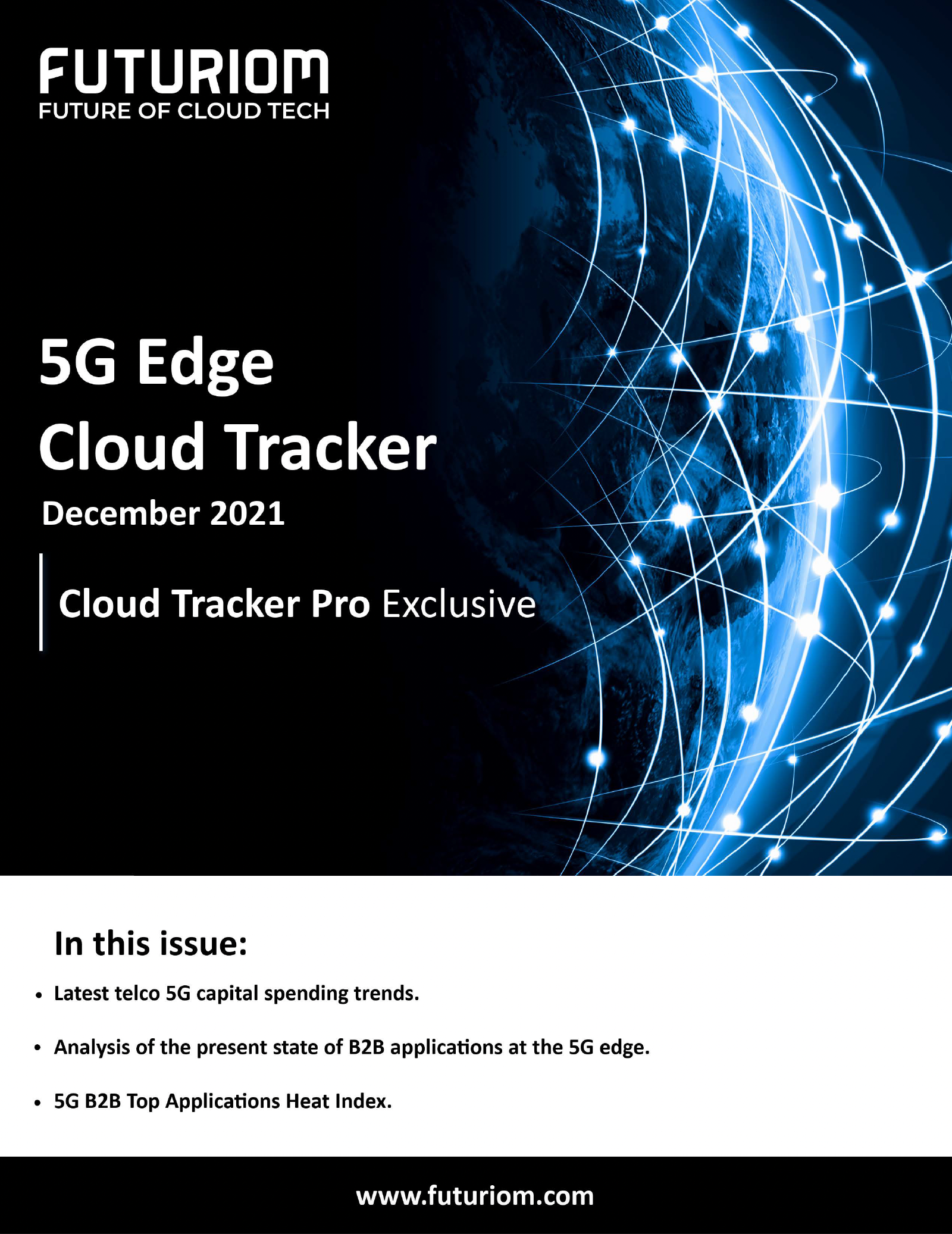Futuriom 5G Edge Cloud Tracker - December 2021
Download Report with a
Cloud Tracker Pro Subscription

$48/month or $500/year
per individual
2021 was supposed to be the year in which 5G made its official debut as the preferred service for all kinds of groundbreaking business apps, from drone package delivery to selfdriving cars to remote surgery. But that hasn’t quite unfolded as hyped.
Here are some of our key findings:
• The 5G “hype cycle” has peaked. Businesses are realizing that many so-called use cases for 5G are still in the realm of imagination, since implementing applications such as virtual reality (VR) in stadiums, autonomous vehicles, and remote surgery are out of reach in terms of complexity and cost. Instead, organizations are narrowing their focus on more realistic 5G applications, and they’re doing that selectively, wherever they can identify clear return on investment (ROI).
• Telcos continue to invest in 5G, but many business services remain in the test phase. Worldwide, telcos continue to invest heavily in 5G infrastructure, including spectrum. Indeed, the top three U.S. carriers in 2020 spent an aggregated sum of more than $76 billion to purchase 281 MHz of spectrum in the so-called C-band range. Telcos are planning to make it an essential source of 5G services. But timeframes for initial (and partial) C-band commercial deployment are still at least several months away.
• The “killer application” that will break open the 5G business-to-business (B2B) market has yet to be revealed, but there are a few candidates. Computer vision (CV) may be the leading application for edge deployments, the one with sufficient momentum to cause a hockey-stick market uptick in 5G B2B services. Futuriom has created a cascading “heat index” placing CV and other emerging applications for 5G in perspective.
Download to to explore more.
